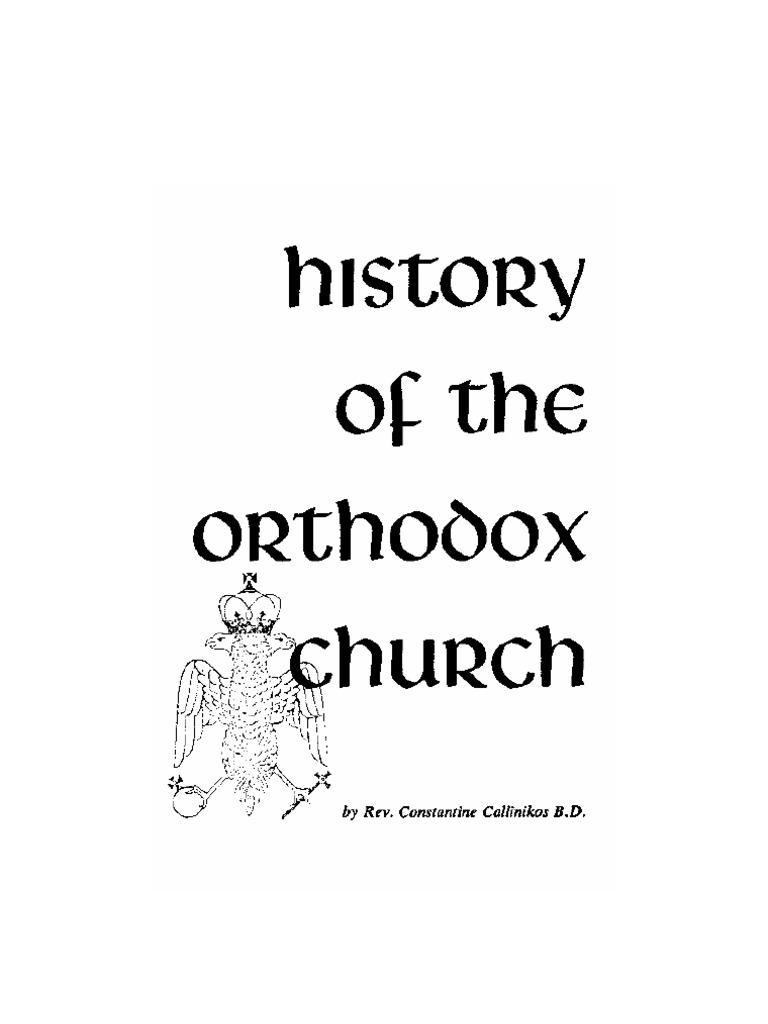The origins of the Orthodox Church are deeply rooted in the history of Christianity itself, tracing back to the very apostles of Jesus Christ. This article endeavors to elucidate the intricate tapestry of the Orthodox Church’s founding, its apostolic origins, and the enduring legacy of Byzantium, all while framing these elements within the broader Christian perspective.
At its foundation, the Orthodox Church claims direct lineage to the apostles, who were commissioned by Christ to spread his teachings. This apostolic succession is central to Orthodox ecclesiology, underlining the belief that the authority of the Church is derived from Christ through an unbroken line of bishops. The early Church, particularly in the first century, was marked by the fervent spread of the Gospel and the establishment of communities centered around teaching, communion, and the rituals that would gradually come to define Christian worship.
In examining the apostolic origins, prominence must be given to key figures such as Saint Peter and Saint Paul. Saint Peter, often regarded as the first bishop of Rome, played a crucial role in the formation of early Christian doctrine and practice. His martyrdom in Rome underscores the deep interconnection between the Church and the city that would become, according to Orthodox tradition, a spiritual epicenter. Meanwhile, Saint Paul’s missionary journeys established numerous congregations across the Mediterranean, thereby facilitating the early dissemination of Christianity beyond Jewish communities into the Greco-Roman world.
The synodal nature of the early Church councils contributed significantly to the formulation of Orthodox doctrine. These gatherings addressed theological disputes and pastoral challenges, culminating in the establishment of the Nicene Creed during the First Council of Nicaea in 325 AD. This creed functions as a defining statement of faith for Orthodox Christians, embodying the consensus achieved through apostolic tradition and the predecessors’ teachings.
As Christianity spread and diversified, so too did its ecclesiastical structures. With the establishment of Constantinople as the new capital of the Roman Empire by Emperor Constantine in 330 AD, a pivotal transformation occurred. This city emerged not only as a political capital but also as a significant center for Orthodox Christianity, superseding Rome’s status in many respects. The Byzantine Empire thus became the bastion of Orthodoxy, and its ecclesiastical identity began to solidify.
The Byzantine legacy lies in both its theological contributions and its artistic expressions of faith. The use of icons, basilicas, and liturgical practices that characterized Byzantine worship reflect a profound understanding of the divine. The hesychastic tradition, emphasizing inner quietude and contemplation, also flourished in this milieu, influencing Orthodox spirituality profoundly. Iconography, specifically, serves as a window into the divine and a vital component of Orthodox worship, merging artistic expression with theological truth.
Throughout the centuries, the relationship between the Orthodox Church and the state evolved, particularly during the Byzantine period. The symphony of church and state—wherein the emperor held a divinely sanctioned role over both temporal and spiritual matters—became a hallmark of Byzantine identity. This intertwining fostered a unique societal framework where ecclesiastical authority coexisted with imperial power, shaping the moral and ethical foundations of Byzantine society.
As the Byzantine Empire waned and ultimately fell in 1453, the Orthodox Church faced new challenges while maintaining its doctrinal integrity. The rise of various national churches across Eastern Europe and the Middle East, many gaining autocephalous status, indicated the resilience of Orthodox Christianity in adapting to new sociopolitical realities while remaining tethered to its apostolic roots. The Russian Orthodox Church, for instance, emerged as a formidable entity, embracing the Byzantine legacy while forging its own path within the global Orthodox communion.
This rich history has lent itself to the Orthodox Church’s intricate relationship with culture, ethics, and art. The integration of Hellenistic philosophy, particularly during the Patristic period, led to a synthesis of faith and reason that continues to characterize Orthodox theology. Thinkers like Saint Gregory of Nazianzus and Saint John Chrysostom contributed to a deeper understanding of Christ’s nature, the Trinity, and the significance of salvation, which remain foundational pillars within Orthodox belief systems.
Moreover, the liturgical life of the Orthodox Church reflects its historical journey. The Divine Liturgy, steeped in tradition and profound symbolism, invites worshippers into a sacred space that transcends time. Each rite and sacrament echoes the early Church’s practices while also embodying the continuity of faith that has persisted through centuries of theological refinement and cultural adaptation.
In conclusion, the Orthodox Church’s foundation in apostolic origins and its Byzantine legacy offer a compelling narrative of faith that is both historical and contemporary. From the apostolic mission to the bustling centers of Byzantine life, the journey of Orthodoxy represents not merely a religious tradition but a profound expression of the human quest for divine connection. The teachings of the Church continue to resonate with believers today, providing a rich and vibrant faith that celebrates its ancient roots while engaging meaningfully with the modern world.



